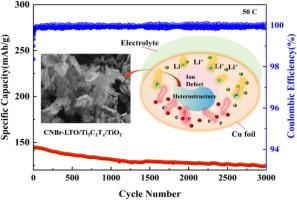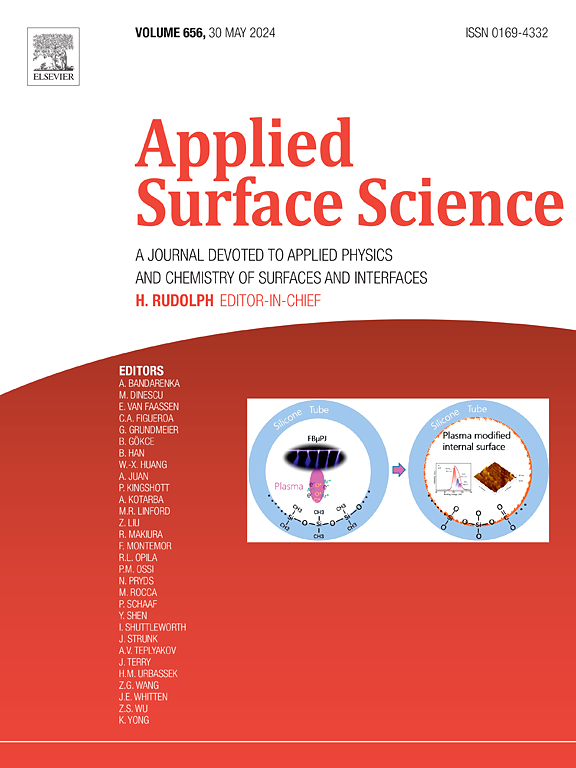C/N/Br co-doped Li4Ti5O12/Ti3C2Tx/TiO2 nanosheet heterojunction lithium-ion battery cathode material
IF 6.3
2区 材料科学
Q2 CHEMISTRY, PHYSICAL
引用次数: 0
Abstract
Exploring high-rate and large-capacity electrode materials with superior electrical conductivity and rapid Li+ diffusion properties remains crucial for improving the performance of Li4Ti5O12 (LTO) anodes. In this study, a C/N/Br co-doped Li4Ti5O12/Ti3C2Tx/TiO2 nanosheet heterojunction was synthesized through a one-step hydrothermal method. Ti3C2Tx MXene nanosheets with relatively low electronegativity function as conductive enhancers and substrates for LTO anchoring, whereas cetyltrimethylammonium bromide (CTAB) acts as a structural directing agent, surfactant, and dopant in the composite material. Theoretical modeling and experimental findings confirm that heterostructures and elemental doping effectively modulate the electronic structure at material interfaces, improving both the diffusion and adsorption characteristics of Li+. Additionally, the incorporation of flexible and conductive Ti3C2Tx enhances the electrical conductivity of the material and mitigates volumetric changes in the composite. The high capacity (336 mAh/g) of partially oxidized TiO2 on the surface of Ti3C2Tx further contributes to the material’s electrochemical performance. The modified CNBr-Li4Ti5O12/Ti3C2Tx/TiO2 material demonstrated notable improvements in rate capability and cycling stability, achieving a capacity of 169.6 mAh/g at 20C (1C = 201.9 mAh/g) after 3000 cycles, with 100 % capacity retention. At 50C, the capacity retention is 83.82 % after 3000 cycles, with a final capacity of 124.9 mAh/g. The integration of heterostructure engineering, elemental doping, and two-dimensional nanoscale architectures offers a promising strategy for designing advanced lithium-ion anode materials with enhanced high-rate performance.

求助全文
约1分钟内获得全文
求助全文
来源期刊

Applied Surface Science
工程技术-材料科学:膜
CiteScore
12.50
自引率
7.50%
发文量
3393
审稿时长
67 days
期刊介绍:
Applied Surface Science covers topics contributing to a better understanding of surfaces, interfaces, nanostructures and their applications. The journal is concerned with scientific research on the atomic and molecular level of material properties determined with specific surface analytical techniques and/or computational methods, as well as the processing of such structures.
 求助内容:
求助内容: 应助结果提醒方式:
应助结果提醒方式:


